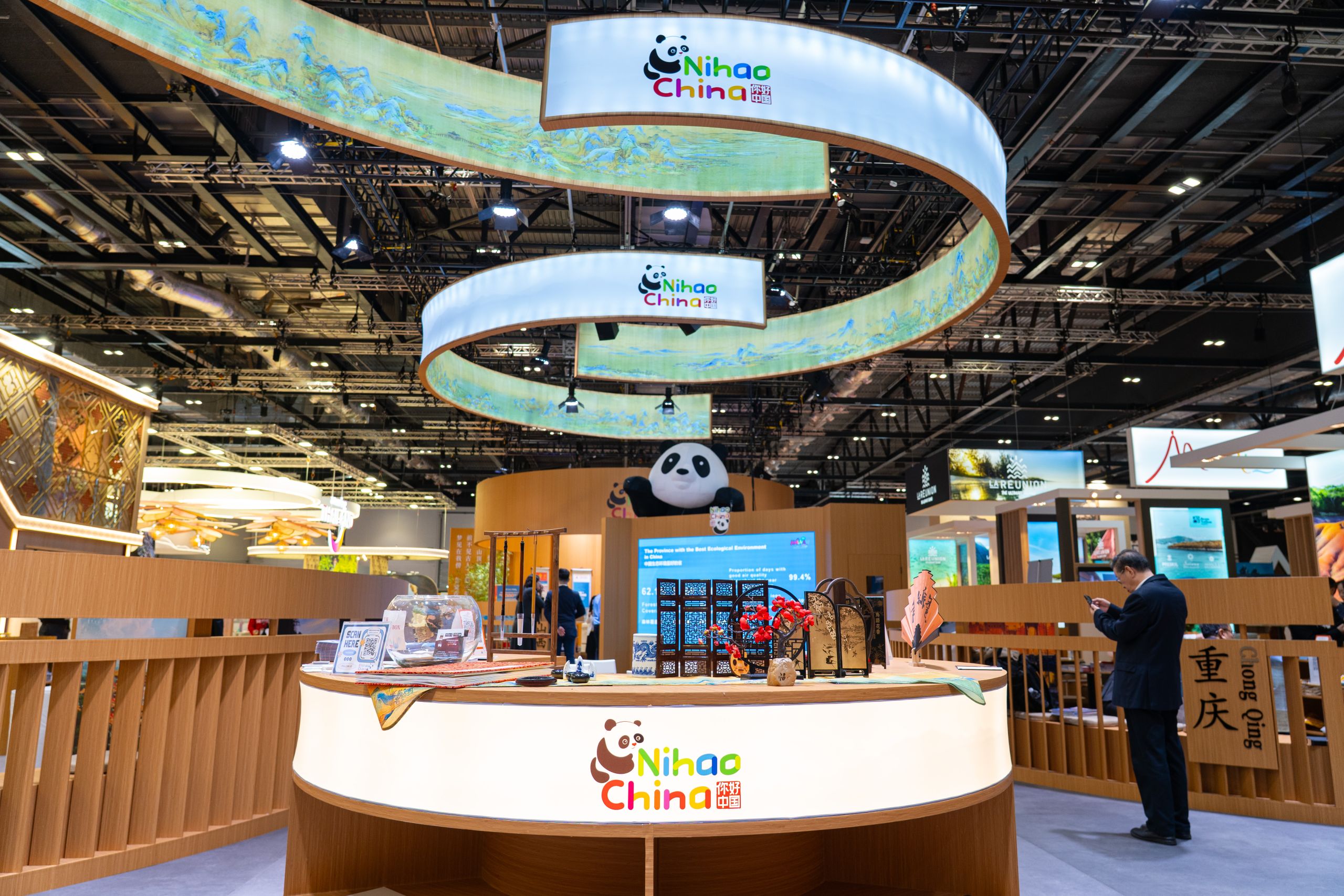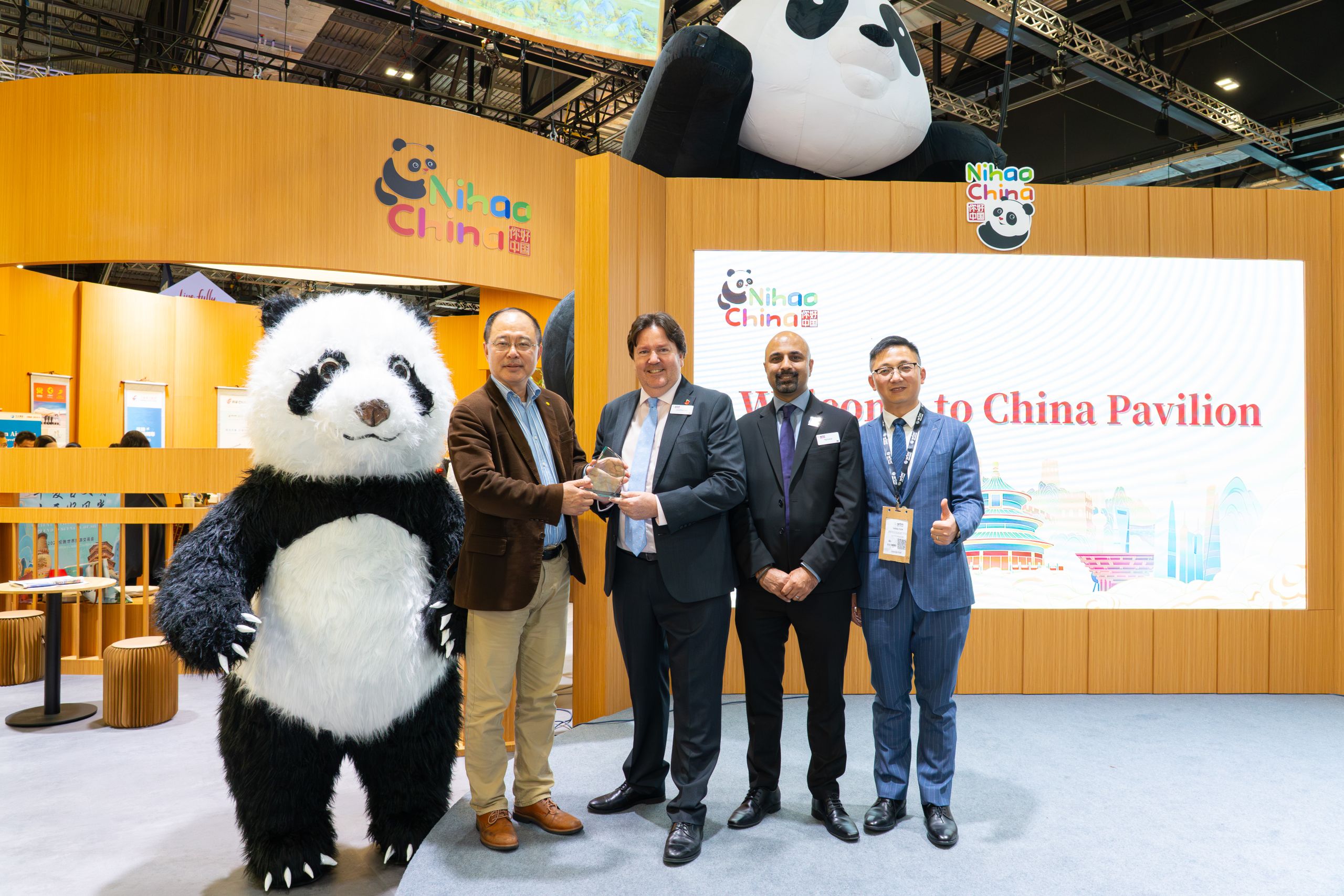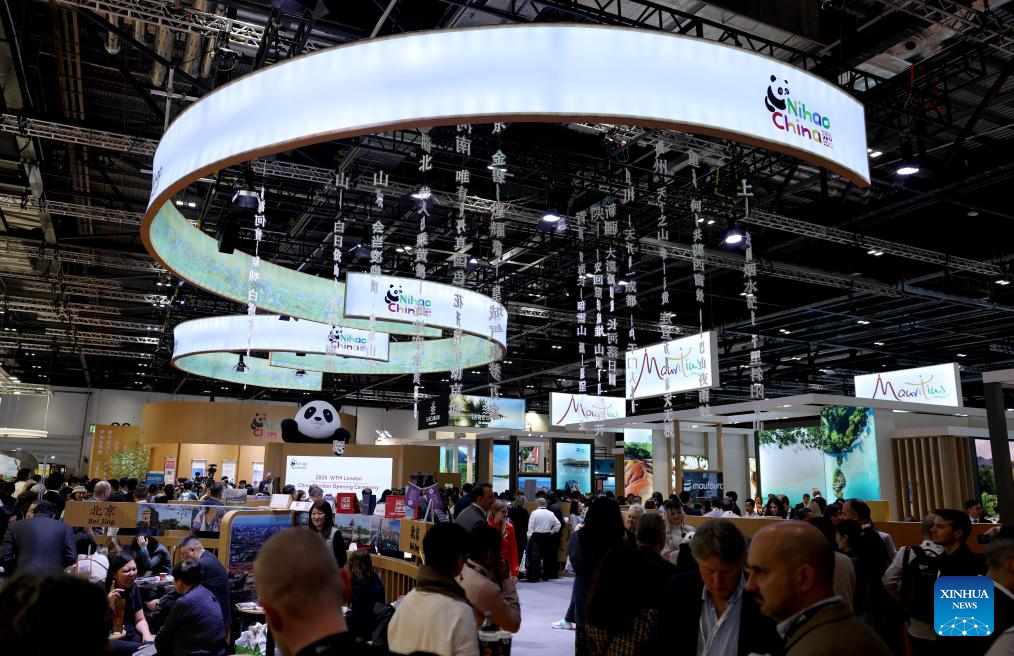
WTM London 2025 Opens: China Pavilion Emerges as Centre of Global Attention
(Source: Hong Kong News Agency; Wang Xiang & Ji Shuoming)
The 2025 World Travel Market (WTM London) opened today at the ExCeL Exhibition Centre, marking the largest edition in the event’s 45-year history. With expanded exhibition halls and record-breaking floor space, WTM London this year brings together over 5,000 exhibitors and more than 50,000 professional buyers from over 190 countries and regions. Over three days, industry leaders will engage in intensive exchanges and business negotiations across themes including sustainability, technology and investment. As the global travel sector’s annual “barometer”, WTM London 2025 is not only a marketplace for business matching but also a comprehensive showcase of the industry’s capabilities and evolving narrative.

Momentum surrounding China became evident from the very first day. The China Pavilion distinguished itself from more than 180 competing national and regional stands to win the coveted “Best Stand Design Award”, recognised for its seamless integration of creative storytelling, technological innovation and sustainable practices.
Receiving the award, Zhang Li, Director of the China National Tourist Office in London, remarked that the honour reflects the international community’s recognition of China’s design innovation within the culture and tourism sector, as well as its commitment to a model of high-quality tourism development rooted in innovation, integration and sustainability. She added that China will continue to uphold an open, cooperative approach and provide an inclusive platform for global tourism stakeholders, presenting a true, multidimensional and comprehensive image of China to the world.
This year’s China Pavilion spans 402 square metres, doubling last year’s size. Under the theme “China Tourism: Innovation · Integration · Sustainable Growth”, the pavilion features a circular suspended LED installation combined with bamboo-wood structures, all fully recyclable and FSC-certified. The design not only captures the essence of Eastern aesthetics but also aligns with global green standards — a perfect embodiment of WTM’s 2025 agenda, which calls for sustainability to evolve from a slogan into a measurable, verifiable criterion.
Across both content and presentation, the China Pavilion delivered an experience that was visually striking, highly interactive and commercially effective. Live intangible cultural heritage demonstrations were staged every 30 minutes — from Shaolin Kung Fu and Jingdezhen ceramics to live Dragon Well tea roasting — transforming traditional culture into immersive encounters for visitors.
High-definition digital attractions such as an 8K holographic Great Wall, real-time winter scenes from the Forbidden City, and AI-generated bespoke China itineraries further bridged distance through technology.
In the aviation sector, China’s three major airlines made a joint appearance for the first time, announcing 20 new direct routes to Europe, addressing key issues of inbound accessibility and capacity recovery. The “Carbon-Neutral Travel Passport”, offering visitors the ability to offset their round-trip emissions via QR code, provided a practical solution for European buyers willing to pay more for environmentally responsible travel.
On opening day alone, the pavilion welcomed over 3,000 professional buyers, with on-site agreements expected to exceed USD 1.2 billion — affirming the pavilion’s role as a genuine B2B trading hub, far beyond a purely visual showcase.

A joint report released at WTM by the event organisers and the Oxford Economics Institute, titled the 2025 Global Tourism Report, underscores the industry’s strong resurgence. Key findings include:
By 2035, tourism is projected to contribute USD 16 trillion to global GDP (approximately 12%).
2025 international arrivals have already surpassed pre-pandemic peaks.
Three major trends dominate:
- Sustainability as a hard requirement — 77% of travellers are willing to pay an average of 15% more for low-carbon itineraries.
- Generative AI driving personalisation and dynamic pricing.
- A shift from frequent short-haul trips towards more immersive long-haul travel.
Within this framework, China stands out for its structural strengths, offering both cultural depth and cutting-edge digital experiences while advancing on capacity, visa facilitation and destination development simultaneously.
Data further highlights China’s resurgence. In 2025, tourism is expected to contribute 11.4% to China’s GDP, totalling around USD 2.61 trillion. Domestic tourism spending is projected to return to the CNY 7 trillion level, with international visitor expenditure rising significantly.
Outbound travel from China is forecast to exceed 155 million trips, surpassing the 2019 peak, with luxury bespoke journeys and long-stay (15+ days) itineraries leading growth. Both millennials and the increasingly active senior demographic are driving demand.
Inbound travel is also gaining momentum: eased visa policies and restored flight capacity have boosted European interest in emerging Chinese destinations. Henan’s cultural heritage and kung fu narrative, Heilongjiang’s ice-snow economy and Guangxi’s borderland culture have all become sought-after resources among European buyers, reshaping a landscape once dominated primarily by Beijing, Shanghai and Hangzhou.

Data further highlights China’s resurgence. In 2025, tourism is expected to contribute 11.4% to China’s GDP, totalling around USD 2.61 trillion. Domestic tourism spending is projected to return to the CNY 7 trillion level, with international visitor expenditure rising significantly.
Outbound travel from China is forecast to exceed 155 million trips, surpassing the 2019 peak, with luxury bespoke journeys and long-stay (15+ days) itineraries leading growth. Both millennials and the increasingly active senior demographic are driving demand.
Inbound travel is also gaining momentum: eased visa policies and restored flight capacity have boosted European interest in emerging Chinese destinations. Henan’s cultural heritage and kung fu narrative, Heilongjiang’s ice-snow economy and Guangxi’s borderland culture have all become sought-after resources among European buyers, reshaping a landscape once dominated primarily by Beijing, Shanghai and Hangzhou.
This year’s WTM places special emphasis on the convergence of technology and the night-time economy. AI itinerary planners, smart-city navigation tools and VR heritage tours showcased within the China Pavilion complemented offerings such as music festivals, aurora-watching and night-time museum experiences. Together, these demonstrate China’s emerging model of “authentic experience + digital enhancement” for international storytelling.
China also presented its largest-ever delegation: cultural and tourism leaders from 31 provinces, autonomous regions and municipalities attended in person. Provinces such as Henan, Yunnan and Guangdong hosted live-streaming sessions during the event, connecting online traffic directly with overseas buyers. This blend of government endorsement and market-driven engagement delivered both certainty and efficiency in global cooperation.
China’s advancements in sustainability commitments and data-driven reporting also drew strong industry attention. Recyclable materials, traceable carbon offsets and quantifiable event metrics meet Europe’s stringent ESG requirements. Meanwhile, streamlined packaging of new air routes, destination products and ground services has lowered transaction costs for international partners.
British industry bodies commented: “The China Pavilion is not a visual spectacle alone — it is a confident, capability-driven demonstration of China’s emergence, shifting from follower to peer, and in some areas, to leader.”
At the evening event China Night, the Mayor of London joined 31 Chinese cultural and tourism ministers to illuminate the Thames in “China Red”, marking the official launch of the 2025 China–UK Year of Tourism Exchange. The gesture signified not only cultural dialogue but also the opening of a new chapter in bilateral industry cooperation.
As real-world orders continue to convert, direct flight networks expand and low-carbon digital capabilities evolve, China is expected to take on an increasingly active role in global tourism supply — not only as one of the world’s largest source markets, but also as a shaper of trends and standards.
Day One of WTM London 2025 has already delivered a clear message: China is telling a comprehensive story of revival, innovation and sustainability. As the global travel industry moves from “recovery” to “quality growth”, the China Pavilion’s approach offers a compelling model for the world.
China’s moment in global tourism has only just begun.





